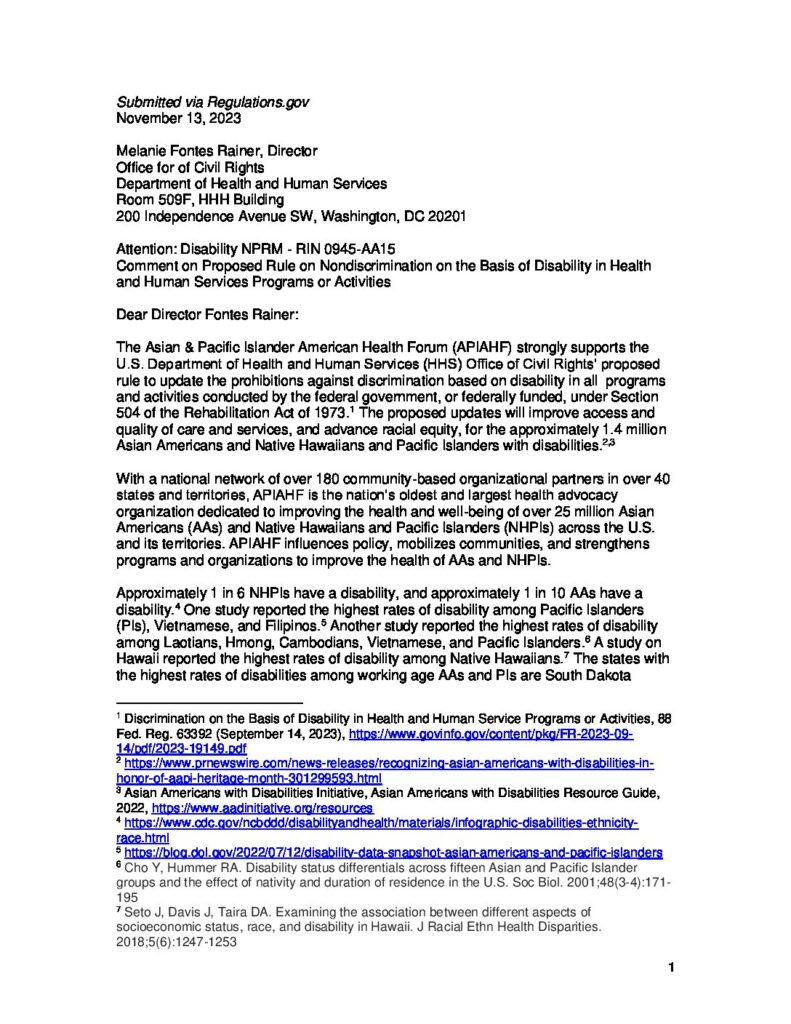The Asian & Pacific Islander American Health Forum (APIAHF) strongly supports the U.S. Department of Health and Human Services (HHS) Office of Civil Rights’ proposed rule to update the prohibitions against discrimination based on disability in all programs and activities conducted by the federal government, or federally funded, under Section 504 of the Rehabilitation Act of 1973. The proposed updates will improve access and quality of care and services, and advance racial equity, for the approximately 1.4 million Asian Americans and Native Hawaiians and Pacific Islanders with disabilities.
Approximately 1 in 6 NHPIs have a disability, and approximately 1 in 10 AAs have a disability. One study reported the highest rates of disability among Pacific Islanders (PIs), Vietnamese, and Filipinos. Another study reported the highest rates of disability among Laotians, Hmong, Cambodians, Vietnamese, and Pacific Islanders. A study on Hawaii reported the highest rates of disability among Native Hawaiians. The states with the highest rates of disabilities among working age AAs and PIs are South Dakota (9.6%), Idaho (9.1%), West Virginia (8.7%), Vermont (8.7%), Mississippi (8.1%), New Mexico (8.0%), Montana (7.8%), and Oklahoma (7.7%). Given the lower overall populations of AAs and PIs and fewer community-based resources and organizations focused on AAs and PIs in these states, strong federal protections against discrimination based on disability – as well as race- are especially vital.
Similar to other persons with disabilities, AAs and NHPIs with disabilities experience stigma, stereotyping, generalizations, and discrimination based on their disabilities. Such discrimination can be compounded by the current pervasive anti-Asian sentiment, fueled by xenophobia and myths about AAs being “perpetual foreigners”. On the other hand, there are seemingly contradictory, parallel myths about AAs being a “model minority” or “healthy immigrants”, rendering AAs with disabilities even more invisible and overlooked. There continues to be a great need for data and research about the health and well-being, and the access and utilization of health and other services by diverse, disaggregated AAs and NHPIs with disabilities.

